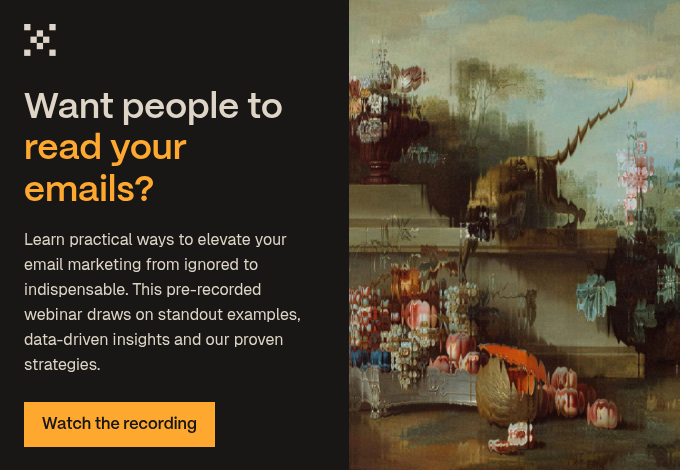'Businesses are spending all this money on this place called the office and they’re making people go to it all the time, yet people don’t do work in the office. What is that about?'
Those are the words of Jason Fried, co-founder of 37signals (creators of Basecamp and other collaborative business tools) and the co-author of ‘Rework’.
In his TED talk ‘Why work doesn’t happen at work’ Fried shares his rather radical theory about work: that the office isn’t the best place to do it. Work, Fried believes, is an activity, not a place.
This begs the question: are we limiting productivity by working in an office? How do we create an efficient, happy company for the modern age?
The importance of being alone
Brainwork requires flow – a psychological state of concentration that takes 15-20 minutes to achieve and which is easily disturbed. Getting quality work done requires uninterrupted alone time. If you’re a maker (someone who spends their day creating), it’s a necessity.
Fried uses the analogy of sleep to explain the importance of uninterrupted work time. Sleep, he says, isn’t something you just do; it’s something you fall into gradually. You don’t just close your eyes and enter deep sleep, it takes time to progress to that state.
The same applies with work. Recent research confirms the intuition that “Sound affects us psychologically, psychologically, cognitive and behaviourally, even though we're not aware of it,” according to Julian Treasure, Chairman of The Sound Agency.
Noisy shops are unwelcoming. Hospital noise levels affect patients and distract staff. But perhaps the worst culprit is the open-plan office. Treasure says that office workers are 66 percent less productive in an open-plan office than when working on their own.
But can you have that in the office?
Managers and meetings
Jason notes two big issues with office culture: managers and meetings. It’s a manager’s job to check up on employees, and holding interruptive meetings is the way to do this. As he explains on his blog:
'A one-hour meeting with six people is a six-hour meeting. A 15-minute meeting with nine people is a two-and-a-quarter-hour meeting. Even a 15-minute meeting with four people costs an hour of collective work time.'
These distractions are costing businesses. In a study of time budgeting at large corporations, Bain & Company found that just one weekly meeting of midlevel managers was costing an organisation $15 million a year.
The cost of ad-hoc interruptions add up too: author and researcher Jonathan Spira estimates that interruptions waste up to 28 billion hours a year, costing the U.S. economy a cool $1 trillion.
Makers vs. managers
A manager needs updates, but a maker needs no interruptions. How does that work?
Another of Jason’s blog posts shows his calendar for January 2017. This is how it looks:

‘Time is the raw material of creation’, as technology pioneer Kevin Ashton explains, and Jason has an abundance. This is what enables him to immerse himself in projects and problems, and to do real work.
What do I mean by real work? As Kevin explains:
‘[It's the] work of becoming expert through study and practice, the work of finding solutions to problems and problems with those solutions, the work of trial and error, the work of thinking and perfecting, the work of creating.’
It’s the kind of work that makes a difference – more so than answering endless emails and attending pointless meetings, the hallmark of office culture.all bad, though
Even though the office might not be conducive to the ideal work environment, office culture does come with its perks. These include:
Social life
After work drinks with colleagues is common practice. ‘Employees who have positive workplace relationships are happier at work’, explains author and speaker Alexander Kjerulf.
'We know that people who are happy at work are more productive, more creative and more successful overall.'
The Danish are a perfect example of this theory in practice. Their adoption of Hygge – the feeling of true contentment – has made them the happiest country in the world.
Compartmentalisation
There’s something to be said for getting up in the morning, putting on the corporate uniform and sitting in the office from nine to five. It makes the office the place of work, and home the place of fun and relaxation.
This separation of church and state is important for both productivity and mental health, but it’s something that people who work remotely or from home don’t always have. Remote work takes a disciplined mind that knows when – and how - to switch off.
A happy medium?
Jason Fried offers some solutions to the problem of workplace distraction. One insight is ‘no talk Thursdays’, where for one day a week, people in the office are not allowed to talk to one another. Absolute silence.
Other solutions could be:
- Don’t add music to noise to cover it up. Address the underlying causes of the noise.
- Adopt library rules for shared working areas. Sshhh! No talking.
- Cancel one meeting a week, or just don’t turn up for one.
- Check out Studyfor iOS, an app that plays calming soundscapes.
- Or just try Brian Eno’s Music for Airports.
- If possible, give people doors they can shut.
- Try noise-cancelling headphones but without any music – just for the silence.
- Switch off phone ringers and pagers to reduce interruptions.
- Monitor your own concentration levels with tools like RescueTime.
- Create spaces for casual conversations and meetings away from people’s desks.
- Invest in a bit of sound proofing and quieter equipment – noisy PC fans aren’t always obvious but the cumulative noise can be draining.
- No management Mondays– Every Monday, managers are not allowed to engage with employees. Let them work.
- Talk Tuesdays– Every Tuesday, whatever needs to be said, gets said. Maybe it’s just an afternoon. But, the whole office talks through their work and everyone can offer solutions.
- No phone Fridays– Every Friday, people are not allowed to answer the phones. Workers must communicate through passive means like email, which allows the worker to respond on their own time, at their own pace.
"Being stingy with your time is part of leading a creative, productive life"
Being stingy with your time is part of leading a creative, productive life explains Kevin Ashton. One way of doing so is to follow Fried’s mantra:
'Say no more.'
Bonus quiz: How well do you work from home?
For those of you working outside the office, test how well you handle work away from 'work'.
.jpg?width=1600&height=800&name=art-institute-of-chicago-srEIl5A91TQ-unsplash%20(1).jpg)


.jpg?width=400&height=250&name=europeana-z_dGJqPPT0M-unsplash%20(1).jpg)


